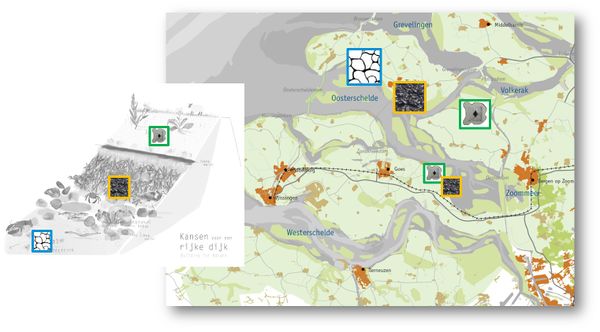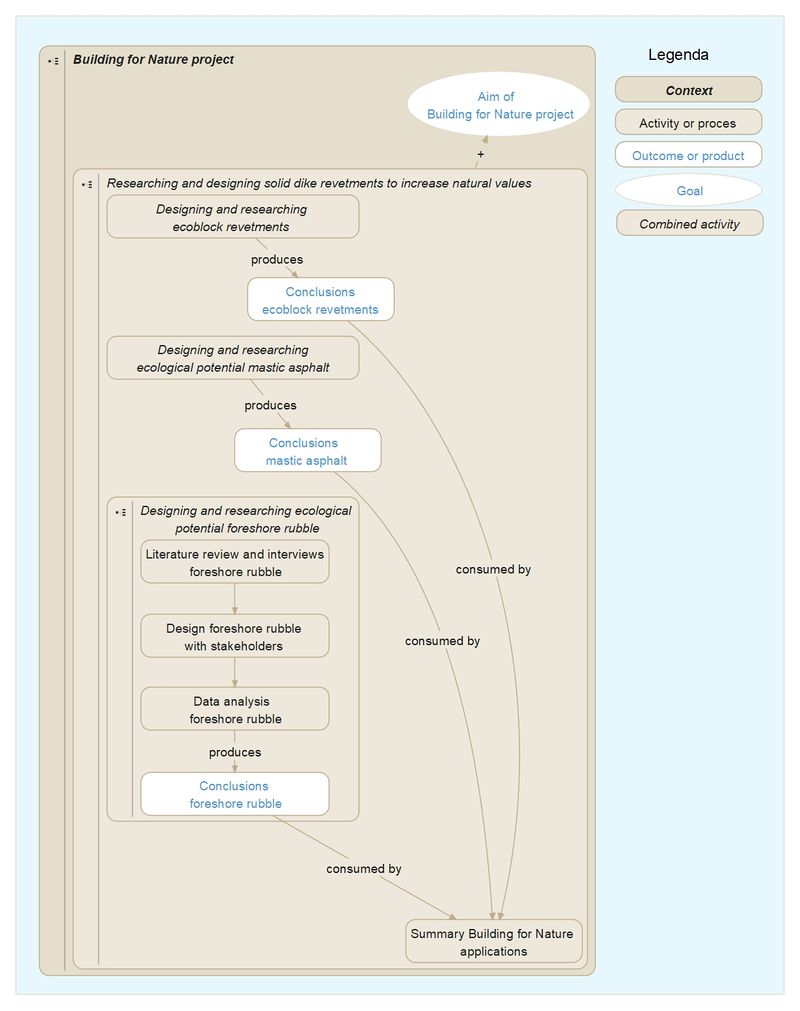To increase the stability of dykes Rijkswaterstaat is often reinforcing the dyke foot with rubble. Especially at locations were deep channels are present at the vicinity of dykes, it is important to strengthening the dyke foot to prevent a collapse of a dyke segment. These collapse of dyke segments, were a very common feature in the past when modern techniques were not available to make these dykes more stable. In the period between 15th and 20th century numerous collapse of dyke segments happened at the southern shore of Schouwen-Duivenland. This resulted in a retreat of the coast line 3 to 5 kilometers. Rijkswaterstaat is using currently rip-rap (or rubble) from limestone for example available at quarries in Belgium, so support the dyke foot.
In the Eastern Scheldt at the location at Schelphoek (Oosterschelde) a dyke reinforcement was scheduled in 2014 (Figure 1.). For the reinforcement of the dyke foot at the ‘flow zone’ (Dutch: stroomzone; water depth 5-35 m), and in the ‘wave zone’ (Dutch: golfzone; water depth <5 m) gravel was used. This grave is available at the bottom of the North sea, the grading is 20-30 mm. To improve the ecological potential of the dyke foot, a total 2000 ton of sandstone (quartzite), and limestone was available to make a design, in order to support ecological rehabilitation and the habitat of the European lobster. The sorting of this material is 20-200 kg.
Aim of this research is to monitor the recolonization of the hard substrate species (epifauna) and species how are present in soft sediment (infauna). The monitoring is based on: T0 measurement (2014), T1-measurement (2015) and T2-measurement (2016). These measurements are executed with divers from the Stichting Zeeschelp. Secondly the recovery of the European lobster is monitored, for this research cages are used which are positioned with boats from the local fishermen. See for a detailed description of the research methods: (Tangelder et al 2017).
This research is executed by Wageningen Marine Research, Stichting Zeeschelp and the HZ University of Applied Sciences.
- Ontwikkeling epifauna, infauna en kreeften (T0, T1, T2) op een ecologisch aantrekkelijke vooroeverbestorting (Schelphoek, Oosterschelde), Tangelder, M., T. van Oijen, M. de Kluijver en T. Ysebaert, IMARES Wageningen UR, 20 juni 2017.
Zie ook
- Designing and researching ecological potential foreshore rubble
- Designing and researching ecological potential mastic asphalt
- Foreshore rubble
- Ecological research
- Literature review and interviews foreshore rubble
- Data analysis foreshore rubble
- Conclusions foreshore rubble
- Ecosystem functions of foreshore rubble
- Physical properties of foreshore rubble
- Ecosystem services of foreshore rubble










